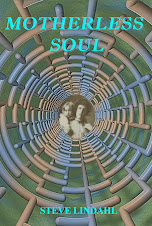 The Signature of All Things by Elizabeth Gilbert
The Signature of All Things by Elizabeth GilbertMy rating: 5 of 5 stars
The Signature of All Things follows the Whittaker family through two generations. The first portion is about Henry Whittaker and the second is his daughter, Alma's story. I found Henry to be interesting and Alma fascinating. They both want what they don't have. Henry, who was born to a working class family, wants riches and respect. Alma, who was born to wealth, wants love, companionship, and sex. Although both stories are complicated and have many different elements, I found that Henry's story reads more like an adventure, while Alma's reads more like a character study.
As a child, Alma is isolated. She was born in 1800, in Philadelphia, where her family has more land and riches than any other family. The other children in her area treat her with deference, so Alma has little to do with them. But she has a brilliant mind and finds solace in study. Alma doesn't have anyone she can call a friend until Retta, a young girl from another wealthy family, becomes her neighbor. The relationship between Alma, Retta, and Alma's adopted sister, Prudence is critical to how the plot unfolds. One of my favorite aspects of this book is how Alma's opinion of the other two girls changes over time. There are a few surprises and, since this portion of the book is written mostly from Alma's point of view, readers don't discover these until Alma does.
There are times when the discussions of botany may get a bit tedious for some readers. (I noticed this was a common complaint in other reviews.) But I listened to the audio version and found Juliet Stevenson's narration moved well enough to keep my attention throughout the long novel. This is an excellent choice for readers who enjoy historical fiction.
Steve Lindahl – author of Motherless Soul and White Horse Regressions
View all my reviews








